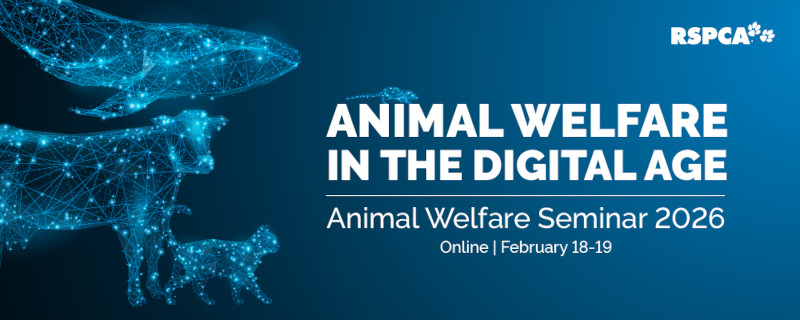Ventilation shutdown (VSD) methods cause prolonged distress and suffering of animals before death. The effectiveness and time to death is variable depending on a number a factors, including the shed type, age and size of animals, the number of animals, the type of ventilation system, the ability to seal shed air inlets and environmental conditions like outside temperatures. Animals are exposed hyperthermia (heat stress) and hypoxia (lack of oxygen) for several hours until death. VSD+ is a modified version of VSD in which heat or humidity is added to speed up the process, but this does not alleviate the welfare concerns.
What is ventilation shutdown?
Ventilation shutdown (VSD) methods are widely rejected due to animal welfare concerns for their slow, painful and distressful process, with death taking several hours. VSD involves turning off all natural and/or mechanical ventilation systems of sheds causing the air inside to become increasingly hot and oxygen-depleted.
In practice, VSD requires sealing a shed by shutting air inlets and/or by turning off ventilation fans. The animals’ body heat causes the internal shed temperature to rise, carbon dioxide levels increase from animal’s respiration and toxic gases accumulate from manure build-up in the shed. These conditions are maintained for several hours ultimately killing the animals in the shed by hyperthermia (extreme heat) and hypoxia (lack of oxygen) [1].
What is VSD+?
VSD+ is a modified version of VSD which includes additional stressors to accelerate the onset of heat stress or asphyxiation in animals and can include:
- manually increasing shed temperature,
- adding carbon dioxide CO₂, or
- reducing humidity.
Why is mass killing of farmed animals required?
Mass killing, or the humane killing of large numbers of animals, is sometimes necessary during emergency animal disease outbreaks to control and prevent further spread of the disease.
VSD has been used in countries like the United States and the UK for mass killing of poultry in highly pathogenic avian influenza outbreaks, and in pigs during transport restrictions cause by the COVID-19 pandemic.
What are the animal welfare issues with ventilation shutdown?
VSD raises serious animal welfare concerns due to:
- Prolonged Suffering: Death can take up to four hours for poultry [2] and even longer for pigs [3], depending on the methods and conditions
- Variable Effectiveness: External factors such as shed type and insulation, animal size and age, stocking density, ventilation system type, and environmental conditions affect the process. Some animals are reported to survive, resulting in ineffective killing [4]
- Severe Distress: Animals experience extreme heat, respiratory distress, and panic before losing consciousness.
When supplemental heat or humidity is added to speed up the process in VSD+, this does not alleviate the welfare concerns. Compared to alternatives like carbon dioxide or high-expansion foam, which can achieve consciousness and death within minutes, VSD (and VSD+) is inhumane and unacceptable.
What are Australia’s current guidelines and recommendations?
The Australian Veterinary Emergency Plan, developed as national guidelines for the destruction of animals (AUSVETPLAN Edition 3.2) in the event of an emergency animal disease, currently states that ventilation shutdown is an unacceptable method for depopulating birds due to animal welfare concerns and a lack of scientific evidence for its effectiveness [5].
What are the alternatives to ventilation shutdown?
There are other more humane methods of mass killing for pigs and poultry available that have been used for various outbreaks of emergency animal diseases.
For poultry, the alternative mass killing methods include carbon dioxide gas and/or inert gases, foam (high expansion air or gas-filled), low atmospheric pressure, or captive bolt devices. For pigs, the alternative mass killing methods include carbon dioxide gas and/or inert gases, captive bolt devices, or firearms. To read more about animal welfare considerations during mass killing, click here.
What is the RSPCA’s view on ventilation shutdown?
The RSPCA defines humane killing as when an animal is either killed instantly or rendered insensible until death ensues, without pain, suffering or distress. The RSPCA is opposed to all inhumane methods of killing animals. VSD and VSD+ are inhumane killing methods that cause prolonged suffering, pain and distress to animals before death.
The RSPCA is of the view that more research and funding is needed to develop and commercialise more humane, effective, and practical methods of mass killing to ensure that Australia is prepared in the event of an emergency animal disease outbreak. That when mass euthanasia is required to protect the health and welfare of other animals and people, the most humane option is available and used.
References
[1] Reyes-Illg G, Martin JE, Mani I, Reynolds J, Kipperman B (2023) The Rise of Heatstroke as a Method of Depopulating Pigs and Poultry: Implications for the US Veterinary Profession. Animals 13(1):140.
[2] Eberle-Krish K et al (2018) Evaluation of ventilation shutdown in a multi-level caged system. The Journal of Applied Poultry Research 27(4):555-563.
[3] Baysinger A, Senn M, Gebhardt J, Rademacher C, Pairis-Garcia M (2021) A case study of ventilation shutdown with the addition of high temperature and humidity for depopulation of pigs. Journal of the American Veterinary Medical Association 259(4):415-24.
[4] AVMA (2019) AVMA Guidelines for the depopulation of animals.
[5] Animal Health Australia (2015) AUSVETPLAN operational manual destruction of animals: a manual of techniques of humane destruction. Version 3.2.

